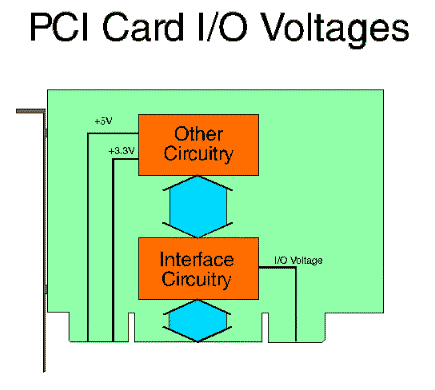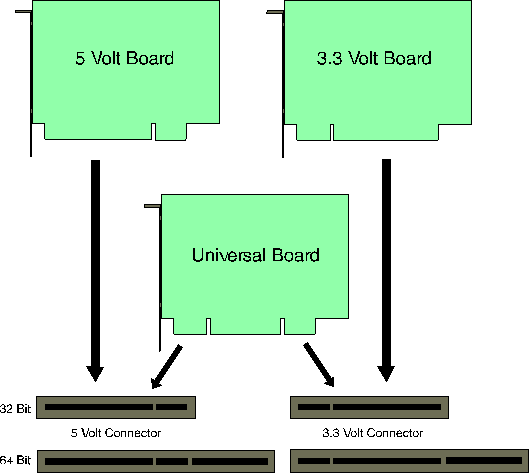- Does either the 320 or 540 have any 5V PCI slots?
- Which slots are on which busses?
- Are there any other PCI devices on these internal busses?
- Why refer to the busses as "bus 0" and "the second bus"?
3.3V and 5V PCI Questions
- Will 5V Only PCI cards fit in the slots of the 320?
- Will 5V Only PCI cards fit in 540?
- What about "universal" cards?
- So what kind of cards will fit in the 320 and 540 slots?
| PCI Card Type |
320 Slots |
540 5V Slots |
540 3.3V Slots |
| 5V Only | No |
Yes |
No |
| Universal | Yes |
Yes |
Yes |
| 3.3V Only | Yes |
No |
Yes |
- Do 3.3V cards use 5V too?
- Do 5V cards need 3.3V?
- So, if both kinds of cards can use both voltages, what does the 5V or 3.3V nomenclature mean?

- How can I tell if a card is a 5V, 3.3V or universal card?
Here's what to look for:

- Are there many 3.3V or universal cards available?
- What can I do if there's a 5V card that I need to use?
- My PCI card won't let the system power up. What's wrong?